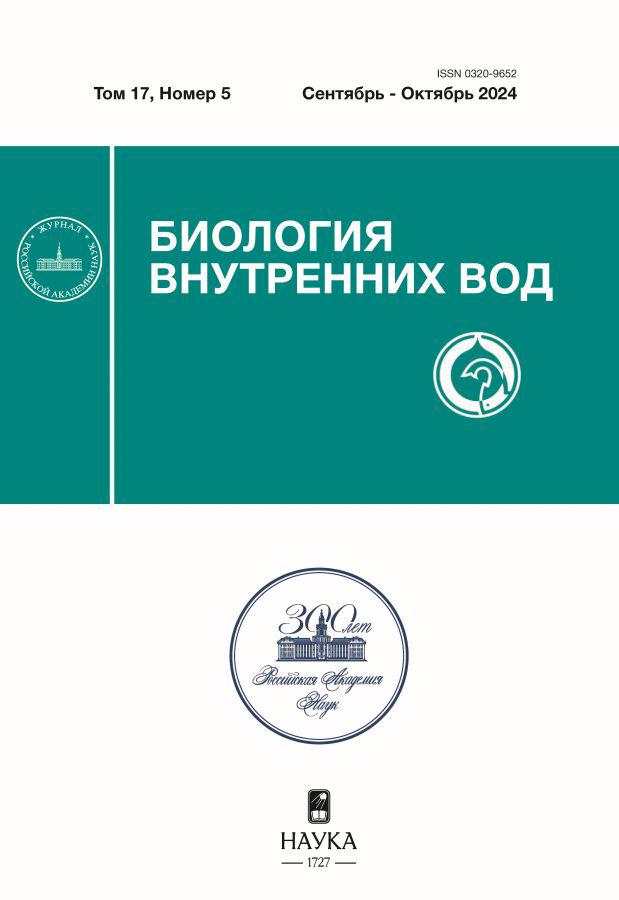Ecophysiology of extremophilic diatom alga Nitzschia cf. thermaloides from mud volcanoes of Crimea
- Authors: Davidovich O.I.1, Davidovich N.A.1, Podunay Y.A.1, Martynenko N.A.2
-
Affiliations:
- Vyazemsky Karadag Scientific Station–Nature Reserve, Russian Academy of Sciences, Kovalevsky Institute of Biology of the Southern Seas, Russian Academy of Sciences
- Severtsov Institute of Ecology and Evolution, Russian Academy of Sciences
- Issue: Vol 17, No 5 (2024)
- Pages: 793-800
- Section: ЭКОЛОГИЧЕСКАЯ ФИЗИОЛОГИЯ И БИОХИМИЯ ГИДРОБИОНТОВ
- URL: https://ruspoj.com/0320-9652/article/view/670065
- DOI: https://doi.org/10.31857/S0320965224050109
- EDN: https://elibrary.ru/XQZBDS
- ID: 670065
Cite item
Abstract
The diatom alga Nitzschia cf. thermaloides can be found in large numbers in puddles and lakes in the places where mud volcanoes function in the area of the Bulganak mud volcano field (eastern Crimea). Environmental conditions in such reservoirs are extreme: salinity is from 18 to ≥70‰, insolation is extremely high, and ultraviolet radiation is very strong. The growth rate and the intensity of sexual reproduction of N. cf. thermaloides at different salinity and illumination levels have been studied in laboratory conditions. We have determined the limits of halotolerance and the optima of salinity and illumination for growth and sexual reproduction of the alga, capable of vegetative reproduction in an environment with salinity from 0 to 220‰. The range for sexual reproduction is narrower, from 6 to 54‰. The salinity of 22–25‰ and illumination of about 1.5 klx are optimal for both vegetative and sexual reproduction of N. cf. thermaloides.
Full Text
About the authors
O. I. Davidovich
Vyazemsky Karadag Scientific Station–Nature Reserve, Russian Academy of Sciences, Kovalevsky Institute of Biology of the Southern Seas, Russian Academy of Sciences
Email: nickolaid@yandex.ru
Russian Federation, Feodosiya
N. A. Davidovich
Vyazemsky Karadag Scientific Station–Nature Reserve, Russian Academy of Sciences, Kovalevsky Institute of Biology of the Southern Seas, Russian Academy of Sciences
Author for correspondence.
Email: nickolaid@yandex.ru
Russian Federation, Feodosiya
Yu. A. Podunay
Vyazemsky Karadag Scientific Station–Nature Reserve, Russian Academy of Sciences, Kovalevsky Institute of Biology of the Southern Seas, Russian Academy of Sciences
Email: nickolaid@yandex.ru
Russian Federation, Feodosiya
N. A. Martynenko
Severtsov Institute of Ecology and Evolution, Russian Academy of Sciences
Email: nickolaid@yandex.ru
Russian Federation, Moscow
References
- Зайцев Г.Н. 1984. Математическая статистика в экспериментальной ботанике. М.: Наука.
- Полякова С.Л., Давидович О.И., Подунай Ю.А., Давидович Н.А. 2018. Модификация среды ESAW, используемой для культивирования морских диатомовых водорослей // Морской биол. журн. Т. 3. № 2. С. 73. удалено для уменьшения самоцитирования
- Полякова С.Л., Давидович Н.А., Стоник И.В. и др. 2022. Репродуктивная совместимость и токсикогенная активность диатомовой водоросли Pseudo-nitzschia calliantha Lundholm, Moestrup & Hasle из трех географически удаленных популяций // Физиология растений. Т. 69. № 5. С. 480. https://doi.org/10.31857/S0015330322050177
- Финенко З.З., Ланская Л.А. 1971. Рост и скорость деления водорослей в лимитированных объемах воды // Экологическая физиология морских планктонных водорослей (в условиях культур). Киев: Наук. думка. C. 22.
- Цой И.Б., Емельянова Э.А. 2021. Атлас диатомовых водорослей Дагинского грязевого вулкана (Восточный Сахалин). Владивосток: ТОИ ДВО РАН.
- Andersen, R.A., Berges, J.A., Harrison, P.J., Watanabe, M.M. 2005. Recipes for freshwater and seawater media // Algal Culturing Techniques. N.Y.: Elsevier Acad. Press.
- Andersen, R.A., Kawachi, M. 2005. Traditional microalgae isolation techniques // Algal Culturing Techniques. N.Y.: Elsevier Acad. Press.
- Davidovich N.A., Davidovich O.I., Podunay Yu.A. 2023. Reproductive biology and the life cycle of the diatom Nitzschia cf. thermaloides inhabiting mud volcanoes of Crimea // Mar. Biol. J. V. 8(2). P. 42. https://doi.org/10.21072/mbj.2023.08.2.03
- Davidovich O.I., Davidovich N.A., Podunay Yu.A., Solak C.N. 2022. Halotolerance limits of the Black Sea representative of the genus Entomoneis Ehrenberg, 1845 (Bacillariophyta) // Mar. Biol. J. V. 7(2). P. 32. https://doi.org/10.21072/mbj.2022.07.2.03
- Figueroa R.I., Bravo I., Fraga S. et al. 2009. The life history and cell cycle of Kryptoperidinium foliaceum, a dinoflagellate with two eukaryotic nuclei // Protist. V. 160(2). P. 285. https://doi.org/10.1016/j.protis.2008.12.003
- Heudre D., Wetzel C.E., Van de Vijver B. et al. 2020. Brackish diatom species (Bacillariophyceae) from rivers of Rhin-Meuse basin in France // Botany Letters. V. 168(1). P. 56. https://doi.org/10.1080/23818107.2020.1738269
- Hustedt F. 1955. Marine littoral diatoms of Beaufort, North Carolina. Duke University Marine Station, Bulletin. № 6.
- Imanian B., Pombert J.-F., Dorrell R. et al. 2012. Tertiary endosymbiosis in two dinotoms has generated little change in the mitochondrial genomes of their dinoflagellate hosts and diatom endosymbionts // PLOS ONE. V. 7(8). e43763. https://doi.org/10.1371/journal.pone.0043763
- Kumar S., Stecher G., Li M. et al., al. MEGA X: Molecular evolutionary genetics analysis across computing platforms // Mol. Biol. Evol. 2018. V. 35. P. 1547. https://doi.org/10.1093/molbev/msy096
- Nikulina T.V., Kociolek J.P. 2011. Diatoms from hot springs from Kuril and Sakhalin islands (Far East, Russia) // The Diatom World, Cellular Origin, Life in Extreme Habitats and Astrobiology. Springer Science + Business Media B. V. 19. Р. 333.
- Ryabushko L.I., Bondarenko A.V. 2020. Microalgae of mud volcano of the Bulganak sopochnoe field on the Crimean Peninsula // Mar. Biol. J. V. 5(1). P. 64. https://doi.org/10.21072/mbj.2020.05.1.07
- Solak C.N., Gastineau R., Lemieux C. et al. 2021. Nitzschia anatoliensis sp. nov., a cryptic diatom species from the highly alkaline Van Lake (Turkey). PeerJ 9: e12220. https://doi.org/10.7717/peerj.12220
- Witkowski A., Lange-Bertalot H., Metzeltin D. 2000. Diatom flora of marine coasts. I A.R.G. Ganter Verlag K.G.
- Wood A.M., Everroad R.C., Wingard L.M. 2005. Measuring growth rates in microalgal cultures // Algal culturing techniques. N.Y.: Elsevier Acad. Press.
- Yamada N., Bolton J., Trobajo R. et al. 2019. Discovery of a kleptoplastic ‘dinotom’ dinoflagellate and the unique nuclear dynamics of converting kleptoplastids to permanent plastids // Scientific Reports. V. 9(1). https://doi.org/10.1038/s41598-019-46852-y
Supplementary files















